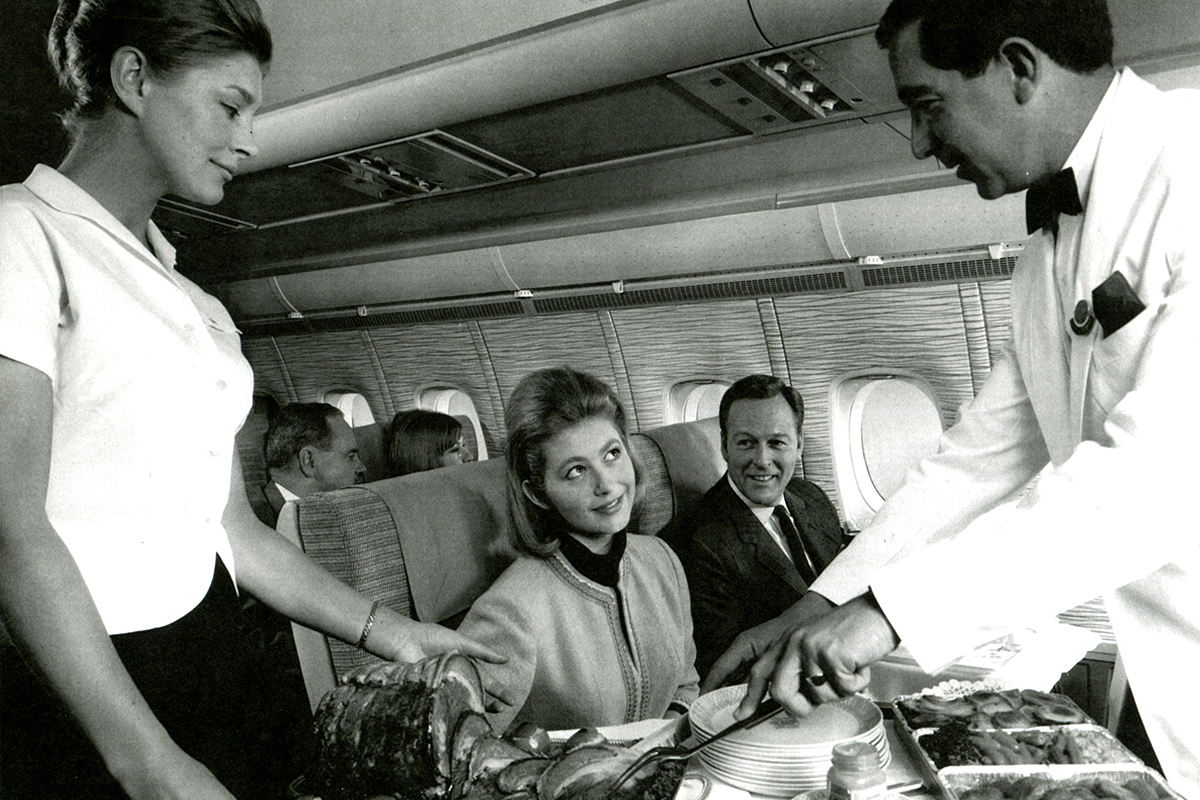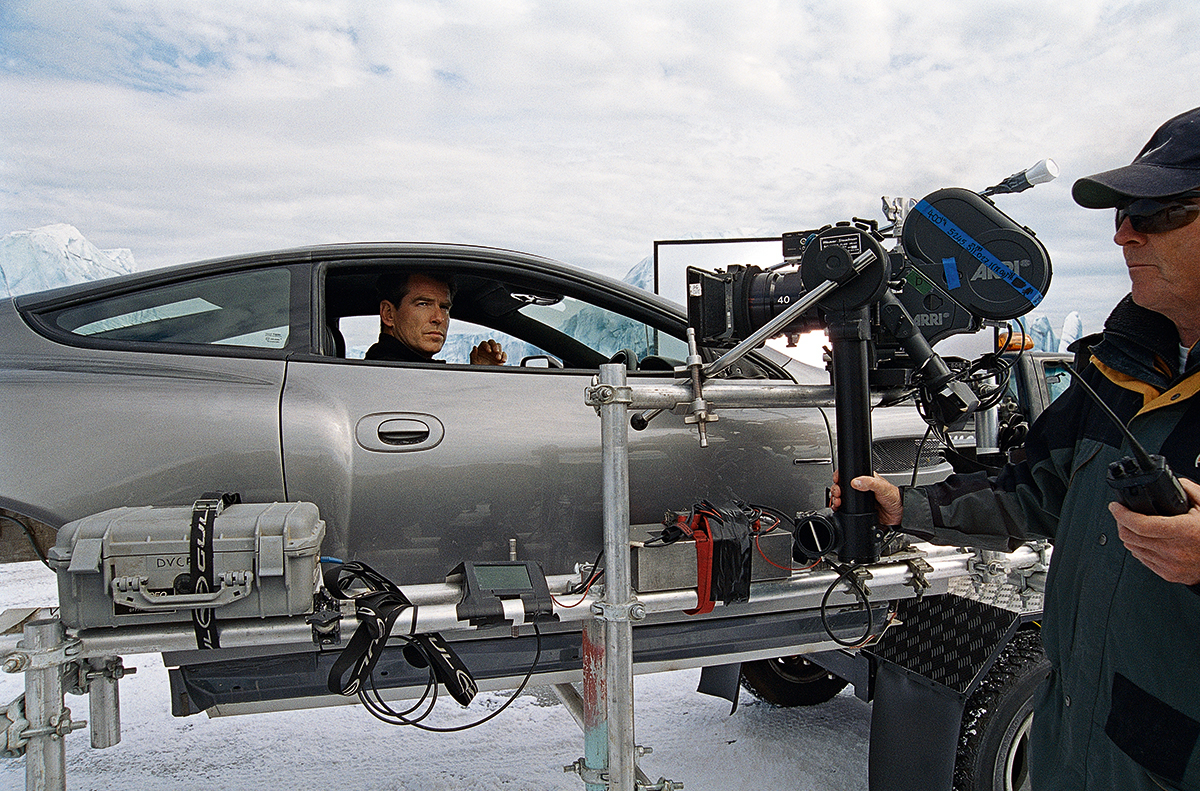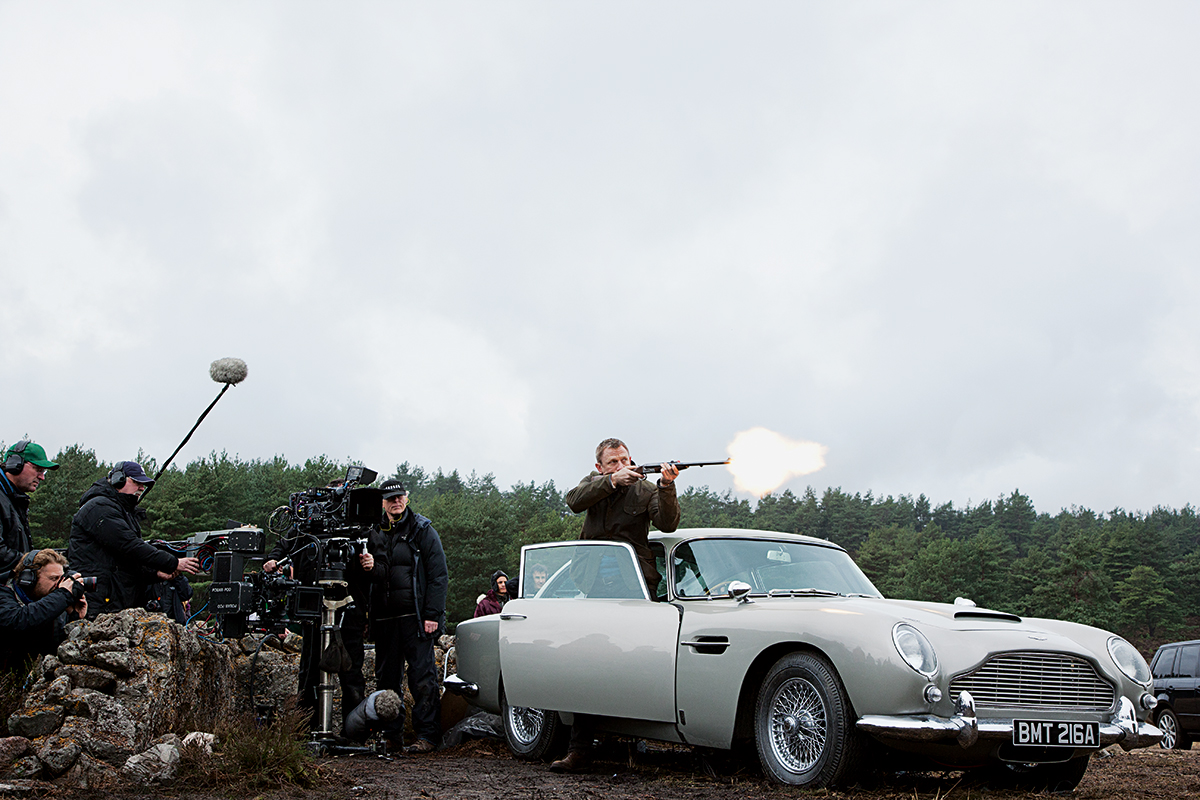Previous Article
Next Article
- AM WORLD
- FEATURES
- 100 YEARS OF ASTON MARTIN
- ARCHIVE
centenary technology
A STEP AHEAD
From the revolutionary 2-litre Atom to the V12 engine of the db7, Aston Martin has ALWAYS pushed the boundaries of technological advancement. Matthew de Paula looks at milestones FROM the BRAND’S past 100 years and CONSIDERS what the future may hold
Photographs: Tom Mannion
Within the GLEAMING shops of Aston Martin Works in Newport Pagnell, cars are spread out as they await repair and refurbishment. A careworn DB2/4 Mk III is sitting on jacks, stripped down to the bones of its chassis and looking in need of attention. Others, such as a Supercharged Vantage whose dashboard is being refitted after having the wiring looms of its electronics replaced, aren’t in that rough a shape. Meanwhile, the shriek of a 7.3-litre V12 fills an adjacent bay. A technician has just topped off the radiator of a One-77 and fired up the seven-figure super car for a diagnostics test.
Each one of these machines is a mechanical milestone, a reminder of Aston Martin’s progress over 100 years, be it the ground-breaking shape of the old DB2/4 Mk III’s sporting hatchback body, or the thunderous sound of the One-77’s 12-cylinder engine. Here in these workshops, technological breakthroughs from every decade since the turn of the century are in clear relief, illustrating a remarkable lineage that has kept Aston Martin at the forefront of its industry. What follows is a brief account of that lineage with a look at some milestones along the way.
The pre-war cars Early Aston Martins were the playthings of rich young men, but they were not mere toys. Rather, they were serious thoroughbreds used to great success in hill climbs, races at Brooklands circuit in Surrey, England, and international events such as the Strasbourg and Barcelona Grand Prix. It wasn’t until the company changed hands in 1926 that the first true technological leaps were made. That year, engineers William Renwick and Augustus Bertelli, with help from investors, took over the struggling automaker. At the heart of the re-born company was a new 1.5-litre four-cylinder engine developed by Renwick and Bertelli that would spawn a line of engines lasting until 1940.
“One of Bertelli’s geniuses was actually making things extremely simple,” says Andy Bell, owner of Ecurie Bertelli in Buckinghamshire, experts in restoring pre-war Aston Martins. “What he designed worked very well, but it worked very well, simply. If you compare a 1931 Lagonda, for example, with a 1931 Aston Martin, the Lagonda is hugely over-engineered and hugely over-complicated. The Aston Martin is simple, but it works.” The 1929 Aston included a couple of significant advances, including the introduction of dry-sump lubrication—a feature used on race cars to ensure proper oil circulation—and an underslung chassis, which located the rear axle above the chassis, creating a low centre of gravity to improve handling. “Driving the cars is great fun, they handle like little go-karts,” Bell says.

A rivet gun and rivets, part of the tools of the trade. Aston Martin pioneered the use of pop rivets during its construction of the Atom prototype
The Atom In 1939, Aston Martin made perhaps the single biggest technological leap so far. Called the Atom, this futuristic-looking four-door prototype never made it to production. But its constant development throughout World War II, during which Aston Martin only made airplane components, meant it would become the crucial bridge between pre- and post-war Aston Martin. The Atom featured a new 2.0-litre four-cylinder engine. But that wasn’t what made it special—it was its revolutionary body structure. It used square-section steel tubing to form a frame. Aluminium body panels were then attached directly to the frame with pop rivets. “Aston Martin were the first to use pop rivets in this way,” Bell says. The chassis was far more rigid than the ubiquitous ladder frames of the day—so called because they resemble a ladder. It was the precursor to the modern unibody now used on every car. Reportedly impressed after driving the Atom, Sir David Brown decided to buy the financially unstable Aston Martin in 1947. He also acquired Lagonda, another foundering British automaker, primarily for its 2.6-litre in-line six-cylinder engine, and immediately merged the two companies into Aston Martin Lagonda.
The post-war cars The Two Litre Sports, built from 1948 to 1950, was the first made by Aston Martin Lagonda, and the first car to apply technology from the Atom. As its name implies, the Two Litre Sports had a new 2.0-litre four-cylinder engine that produced nearly 100 bhp. Despite being innovative and having decent power, the car wasn’t popular. Then came the DB2 in 1950. It was the first in what would become a long line of revered Aston Martin cars powered by an in-line six-cylinder engine. It started with the 2.6-litre from Lagonda, which produced 105 bhp. In subsequent years, the engine steadily grew in power and was ultimately enlarged to 3.0 litres in 1954, which gave it an output of 140 bhp.
The DB2 had a much shorter wheelbase than its predecessor. More importantly, it had a stiffer chassis, which made it possible to use a fully independent suspension for the first time. Such suspensions are now commonplace, but were rare back then. The DB2 was a success, both on and off the track. Two factory works DB2s took first and second in class at the Le Mans 24 Hours in 1950. The original two-seater DB2 spun off several evolutions, the most notable of which is the DB2/4. It was the world’s first sporting hatchback. The DB2/4 had four seats, an extended roofline at the rear for added headroom, and a generous cargo area that also was easily accessible The now-common “hatchback” design was well ahead of its time when it debuted in 1955. It carries through to today’s Aston Martin V8 Vantage.
“This was a car that you could fill with a couple of weeks’ worth of luggage,” Tim Cottingham, registrar for the Aston Martin Heritage Trust, says of the DB2/4. “Going to Europe, you didn’t have to scrimp on what you took. And people didn’t know how to pack light then, did they?”
The DB4 to DBS Aston Martin took another huge step forward with the DB4, which debuted in 1958. Some of the technology it introduced would last for decades through successive models, including the DB5, DB6, DBS and V8, which ended production in 1989. The company wanted a car with a stiffer chassis, so it turned to Italian coachbuilder Touring of Milan, which was an expert in “superleggera” or “super light” construction. Similar to how the Atom, DB2 and DB Mk III were built, this construction used aluminium body panels over a steel tube structure, creating a light and stiff chassis. The DB4, DB5 and early DB6s were all superleggera. But by the late 1960s, Touring was going bankrupt and ceased production. At the same time, US crash test standards were forcing automakers to beef up their chassis. So Aston Martin dropped the superleggera construction and replaced its steel tubes with more robust extrusions. A new 3.7-litre in-line six-cylinder engine also debuted on the DB4 and was another significant milestone. It was considerably more powerful than the engine it replaced, generating 240 bhp. It is also one of the longest-running Aston Martin engines. By 1969 it had grown to 4.0-litres in the DB6 Mk II and produced an impressive 282 bhp.
But in a quest for even more power, Aston Martin developed a V8 engine, which debuted with the 1969 DBS V8. With more than 300 bhp, this 5.3-litre powerhouse brought a new level of performance to the brand and would be the only engine offered for the next 20 years. In the 1977 V8 Vantage, the engine produced 375 bhp, enabling a sprint from 0 to 60 mph in 5.3 seconds. The DBS was also the first Aston Martin to get an independent De Dion rear suspension, which brought huge improvements in handling.
The DB7 and V12 power Under Ford Motor Company ownership, starting in 1994, Aston Martin developed a new sports car that would harken to the days of the DB6 and put Aston Martin on track to profitability. It was called the DB7 and it debuted in 1994. The DB7 was smaller and lighter than the V8 and Virage that preceded it. It also ditched the heavy V8 engine in favour of an in-line six-cylinder, something that had been absent from Aston Martin’s line-up since the late 1960s. But the key milestone with the DB7 was the introduction of a V12 engine in 1999. Developed in conjunction with Ford and Cosworth, the 6.0-litre engine set a new precedent for Aston Martin that remains to this day.
The Vanquish and VH architecture The 2001 Vanquish was a quantum leap forward. Its structure was revolutionary, being made of extruded aluminium sections bonded and riveted around a carbon fibre transmission tunnel. The aluminium body panels were, in turn, bonded to the structure. As a result, the Vanquish was much stiffer than the DB7. It also benefited from a significantly improved V12 engine with new intake manifolds, camshafts, valve train and crankshaft, resulting in an increase of 40 bhp over the engine in the DB7 V12 Vantage. Total output was 460 bhp. “Really, the introduction of the new Vanquish in 2001 was the biggest change in the company since the days of the DB4,” says Kingsley Riding-Felce, Managing Director of Aston Martin Works. It set Aston Martin on a new trajectory, influencing every car that followed it.
From the Vanquish, Aston Martin derived a new modular architecture, Vertical Horizontal, or VH for short. It follows the same principles of construction as the Vanquish, but uses an aluminium tunnel to connect the engine to the rear-mounted gearbox, instead of one made of carbon-fibre. “The key aspect of VH is it’s a very flexible architecture,” says Ian Minards, Aston Martin Director of Product Development. “Because we’re using bonded aluminium as the body structure, we can make two-door cars, we can make four-door cars. We can make coupes, we can make convertibles. We can make skins out of aluminium, carbon fibre or sheet metal.” The 2004 DB9 was the first Aston Martin built on VH architecture, followed by the 2005 V8 Vantage. In 2009, Aston Martin released perhaps its most stunning technical achievement to date: the One-77. This seven-figure hypercar, of which only 77 were built, has a carbon-fibre chassis even lighter and stiffer than the VH’s bonded aluminium one. It also has a massive engine. At 7.3 litres and 750 bhp, it practically dwarfs the 6.0-litre V12 on which it is based.
Technology developed with the help of Cosworth for the One-77, such as variable valve timing and knock sensing, was incorporated on an updated V12 engine, the AM11. It debuted in 2012 and is both more powerful and efficient than the engine it replaces. The 2012 DB9 was the first production Aston Martin to receive the new AM11 engine, followed by the new Vanquish and Rapide S. The Vanquish also has body panels made entirely of carbon fibre—a first for Aston Martin.
What next?
A convertible version of the Vanquish, called the Vanquish Volante, and a more powerful version of the V12 Vantage, the V12 Vantage S, debut this year. Both feature a further evolution of the 12-cylinder engine, the AM28. “It has a new engine management system from Bosch,” says Ian Minards. This new system will make its way into other models and will be crucial in enabling compliance with stricter emissions regulations in the future. Weight savings and improved aerodynamics are two other ways to gain efficiencies. Weight savings will come from using lighter materials and re-engineering components to make them multifunctional when possible. For example, the hollow aluminium tubes on either side of the One-77’s engine form the frontal crash structure and also duct air to cool the brakes.
But no matter what the technology, Minards assures that the same lineage that is so evident in the cars quietly awaiting service or restoration at
Aston Martin Works will continue. “It’s about evolution really,” he says. “I’d like to think that in 20, 30, 40 years’ time, if you look at an Aston Martin, you’ll still recognise it as an Aston Martin.”
CENTENARY
Previous Article
Next Article
- AM WORLD
- FEATURES
- 100 YEARS OF ASTON MARTIN
- ARCHIVE






